Mayor: Quake Damages Chimneys in 30% of Buildings in Hrvatska Kostajnica
ZAGREB, 2 January, 2021 - The mayor of the town Hrvatska Kostajnica town, situated south of Petrinja and Sisak where the epicentre of the 29 December earthquake was, said on Friday that 30% of buildings in his town had damaged chimneys as a consequence of the devastating quake.
Mayor Dalibor Biscan told the RTL broadcaster that the town needed mostly construction material to repair the roofs and chimneys of buildings damaged by the earthquake so that residents could have heating in their homes.
Biscan also warned about the danger of landslides in Sisak-Moslavina County, notably in the town of Hrvatska Kostajnica.
He said that 42% of the county was at potential risk of landslide and that this risk rose to 60% in Hrvatska Kostajnica.
For more on the Petrinja earthquake, follow our dedicated section.
Croatia-Shaped Cloud Appeared in the Sky Above Sisak After Quake
January 2, 2021 – Shortly after the terrible earthquake that hit the area of Sisak-Moslavina County, the sky above Sisak sent a symbolic message – a beautiful cloud that looks like Croatia on the map appeared above the city!
In the moments of the terrible earthquake that hit Sisak, Petrinja, and surrounding places on Tuesday, which damaged over 2000 houses, an unusual cloud appeared in the sky above Sisak. Few people managed even to notice it, but one child realized – the cloud is in the shape of Croatia on the map. His sister hurriedly captured the moment – she took a photo of the symbolic cloud, which was later shared across social media.
Their mother, Antonija Kmetović, first posted the photo on her Facebook profile. She explained to Jutarnji list how they survived the earthquake and how the significant photo was created.
"We were in the apartment during the earthquake. Everything was breaking, moving, shaking, thundering. The four of us were falling over. We clung to the door frame and begged it to stop. It seemed like an eternity. When it stopped, collapsed closets clogged our hallway. We barely got out, barefoot, hugging, and crying. I left my mobile phone to my children and ran to the apartment to get jackets and shoes. They were standing in front of the building with their neighbors while my husband was removing the closets so that we could walk through the buried hallway," Antonija describes the horror moments they survived in the quake.
"My son saw strange clouds. He is studying geography, so he is interested in maps and longitudes and latitudes. So my daughter immediately photographed the sky. There is no filter or editing. Pure gratitude that we are alive and that we managed to escape outside, that it stopped shaking," says Antonija.
Shortly after the earthquake, she posted a beautiful photo of a cloud in the shape of Croatia on her Facebook profile with the description "God, save Croatia." Their apartment cracked after the devastating earthquake, but she and her family are okay. They are happy that nothing happened to them.
"The apartment cracked, but I think we were fortunate that the building was well built, even though it is over 60 years old. When I see what happened to others, this is happiness to heaven," concludes Antonija.
For more on the Petrinja earthquake, follow our dedicated section.
Croatia Observing Day of Mourning for Earthquake Victims
ZAGREB, 2 January, 2021 - Croatia declared 2 January 2021 as a Day of Mourning for the victims killed in the magnitude 6.2 earthquake which struck Sisak-Moslavina County on 29 December, taking seven lives, injuring dozens and causing huge damage.
On Saturday, when the day of mourning is being observed, flags are half-mast to honour the quake victims: a 12-year-old girl who was killed in the city of Petrinja, five residents in the village of Majske Poljane, and an organist who was found under the rubble of a church in Zazina near Sisak.
Also, entertainment events scheduled for 2 January have been cancelled. Religious services are being held in memory of the victims.
More than 2,000 buildings, were damaged in the devastating earthquake that hit the area of Petrinja, some 50 kilometres south of Zagreb, at 12.19 pm last Tuesday.
The old town of Petrinja sustained the largest damage, and in the county five schools were razed to the ground, Sisak Hospital was seriously damaged, several religious buildings were destroyed, including the cathedral in the city of Sisak.
The intensity of this destructive earthquake has been estimated at VII-IX degrees on the EMS scale. The quake was felt across the country, the Croatian Seismology Service said on its channels immediately after the quake.
Since the 29 December quake, aftershocks have been jolting the quake-hit Croatian areas.
Damage was reported on buildings in other nearby counties, too.
For more on the Petrinja earthquake, follow our dedicated section.
Petrinja Earthquake Distinctly Alters Grounding of Devastated Town
January the 2nd, 2021 - The Petrinja earthquake was absolutely devastating for a multitude of reasons, and while there is never a good time for an earthquake to strike, during the middle of a pandemic in winter couldn't possibly have been worse for a tired, downtrodden population and a weakened economy.
As Poslovni Dnevnik writes, Sotiris Valkaniotis, an international expert on tectonics and paleoseismology, posted a graphical representation of the Sentinel-1 data on landslides triggered by a magnitude 6.2 earthquake in the area. Analyses of satellite radar images from the Sentinel-1 platform are being published across social media, which further reveal the dramatic nature of the horrendous Petrinja earthquake and those which followed in the wider Petrinja and Glina are in recent days, reports N1.
Oikon Ltd. - The Institute of Applied Ecology posted the recordings on its Facebook profile, referring to doc. dr. sc. Mladen Viher from the Croatian Military Academy, which show that the wider area of Petrinja dropped by more than 12 centimetres as a result of the Petrinja earthquake, while the area on the other side of the fault, around Glinska Poljana, rose by seven centimetres.
Sotiris Valkaniotis talked more about the magnitude 6.4 Petrinja earthquake, which was registered in the first moments after it struck by seismological measuring instruments with centres over in the USA. In another Twitter post, Valkanoitis posted another graphic, this time of the fault that was triggered.
"The biggest land rupture due to an earthquake in Europe since what occurred in Norway in 2016," he wrote.
He explained that the fault was between 15 and 20 kilometres in length and that there was a rupture in the direction from northwest to southeast just west of Petrinja.
Alen Berta also posted a graphical representation of what occurred on his Facebook page.
For more on the Petrinja earthquake and to see how you can donate money, food, humanitarian, sanitary and material aid, follow our dedicated section.
Croatian Seismologist Kresimir Kuk Talks Earthquakes in Croatia
January the 2nd, 2021 - The Zagreb earthquake which struck back in March 2020, and the very recent Petrinja earthquake which devastated numerous areas across central Croatia including Petrinja, Sisak and Glina, will remain in Croatia's collective memory for years to come. I for one will never forget the deafening sound of the Zagreb earthquake. Croatian seismologist Kresimir Kuk has offered some expert words on such natural disasters.
As Poslovni Dnevnik writes, earthquakes, although dangerous, escape our capabilities and protocols as they are impossible to predict and are not really ''properly'' distributed over a period of time which can be followed and fully understood.
The shaken and tired residents of Banovina will unfortunately not be able to sleep peacefully for some time to come yet because the area will surely continue to shake for some time, Kresimir Kuk explained.
''The areas of Istria, the Kvarner islands, Slavonia, especially Baranja, the eastern parts along the border... These are places where stronger earthquakes aren't possible,'' said seismologist Kresimir Kuk in conversation with RTL.
Unfortunately, Croatia was hit by two major earthquakes in 2020, the year of the global coronavirus pandemic, which is something not remembered over the last 100 years.
''Fortunately, such strong earthquakes happen in our area very rarely. In seismology, we don't speak statistically precisely, although we often hear a hundred years as a return period. So, this provides some time within which we hope that such strong earthquakes don't happen. But I repeat, that isn't the rule, it's merely a rough approximation,'' Kresimir Kuk concluded.
While earthquakes are sudden events which are totally impossible to properly predict, Kresimir Kuk concluded with certainty that the series of earthquakes across Banovina will last for several more months, varying in their intensity.
For more on the Petrinja earthquake and how you can help, follow our dedicated section.
INA Donates 2.5 Million Kuna to Croatian Earthquake Relief Efforts
January the 2nd, 2021 - The Petrinja earthquake caused tremendous devastation, material damage and tragically - the loss of life. The Croatian earthquake relief funds set up to rebuild the affected central Croatian areas as quickly as possible have seen multiple generous donations.
As Poslovni Dnevnik writes, after the INA Group was actively involved in providing the necessary assistance to the earthquake-affected areas, it has now decided to provide assistance with an additional 2,500,000 kuna. The funds will be donated to the earthquake-affected areas across Sisak-Moslavina County, and part of the funds will be directed to the reconstruction of the "Dr. Ivo Pedisic'' General Hospital which is located in Sisak.
In addition, the INA Group handed over some of its storage facilities in Sisak to the Civil Protection Headquarters. In this way, additional space is being provided for receiving humanitarian aid arriving in the earthquake-affected areas, which will greatly assist the competent services in the redistribution of aid to those who are most in need.
In addition, INA provided several days of fuel and gas cylinders for emergency services through INA cards to the Directorate of Civil Protection in Petrinja, which is coordinating the activities of the field services and units of the National Association of Caterers, who are preparing meals for the local population, the emergency services, members of the Red Cross and numerous volunteers who are working day and night out in the field. The fuel was donated in the same way to the HGSS (Croatian Mountain Rescue Service), which will deliver it to the affected population.
At INA's retail outlets in Sisak, Petrinja, Lekenik and Galdovo, free coffee and water was provided for the police, medical staff, professional and volunteer firefighters, members of the Civil Protection Headquarters, the Red Cross, HGSS and the Croatian army.
INA employees continue to show how big their hearts are by organising themselves and collecting the necessary humanitarian aid at locations in Rijeka, Zagreb and Ivanic-Grad, which will be delivered to the Croatian Red Cross, and some colleagues are using official cars to distribute this aid to the population or to assist machines in rebuilding activities.
After the first two mobile homes, an additional two were sent to Glina and the surrounding areas to ensure a safe roof over the heads of families whose homes were destroyed in the quake. Hotel Crosca in Ivanic-Grad has so far accommodated seven people and is available until its capacities are filled.
In its continued generosity to the Croatian earthquake efforts, INA Maziva also donated 620 litres of the necessary INA Dezinol disinfectant and larger quantities of INA Dezinol Plus disinfectant wipes, which will be distributed to the earthquake-affected areas via the Red Cross.
For more on the Petrinja earthquake and the ongoing Croatian earthquake relief efforts, follow our dedicated section.
Majske Poljane, Glina, Petrinja: Pogled stranca na hrvatski odgovor na katastrofu
30. prosinac 2020. – Dan nakon razornog potresa u Petrinji, TCN je posjetio Majske Poljane, Glinu i Petrinju, te tamo pronašao tragediju, humanost i Hrvate koji daju sve od sebe.
Moj prvi i jedini posjet Petrinji bio je u zimi 2003. godine. Iz nekog sam razloga, kojeg se sada ne mogu sjetiti, morao ići pokupiti Ukrajinca zaposlenog u OSCE-u i njegovog sina. Sin mu je slomio nogu i moj je zadatak bio odvesti ga do bolnice u Zagrebu. Malo se toga sjećam iz Petrinje osim snijega i mnogih srušenih zgrada koje su ostale nakon godina rata i neprijateljske okupacije desetak godina ranije.
Nije se mnogo toga promijenilo za ljude Petrinje i okolice u 25 godina otkako je rat završio. Nezaposlenost, emigracija – nažalost, česta priča u kontinentalnoj Hrvatskoj, osim u glavnom gradu Zagrebu. Potres jačine 6.2 osjetio se u deset drugih zemalja i u svim dijelovima Hrvatske – bio je to moj prvi potres u životu, za vrijeme ručka u Varaždinu, udaljenom 140 kilometara, dovoljno jak da odmah napustimo kuću.
Kako smo pratili posljedice na TCN-u, bilo je jasno da se radi o ogromnoj tragediji, dok je unutar nekoliko sati objavljeno da ima barem sedam žrtava. Međunarodne poruke i obećanja za pomoć počeli su dolaziti, a zanimanje za naše vijesti uživo iz inozemstva bilo je ogromno. Odlučio sam sljedeći dan posjetiti tu regiju, u nadi da će detaljan izvještaj o situaciji na terenu pomoći ljudima da shvate opseg tragedije, kao i realno prikazati sliku o tome što se događa na terenu.
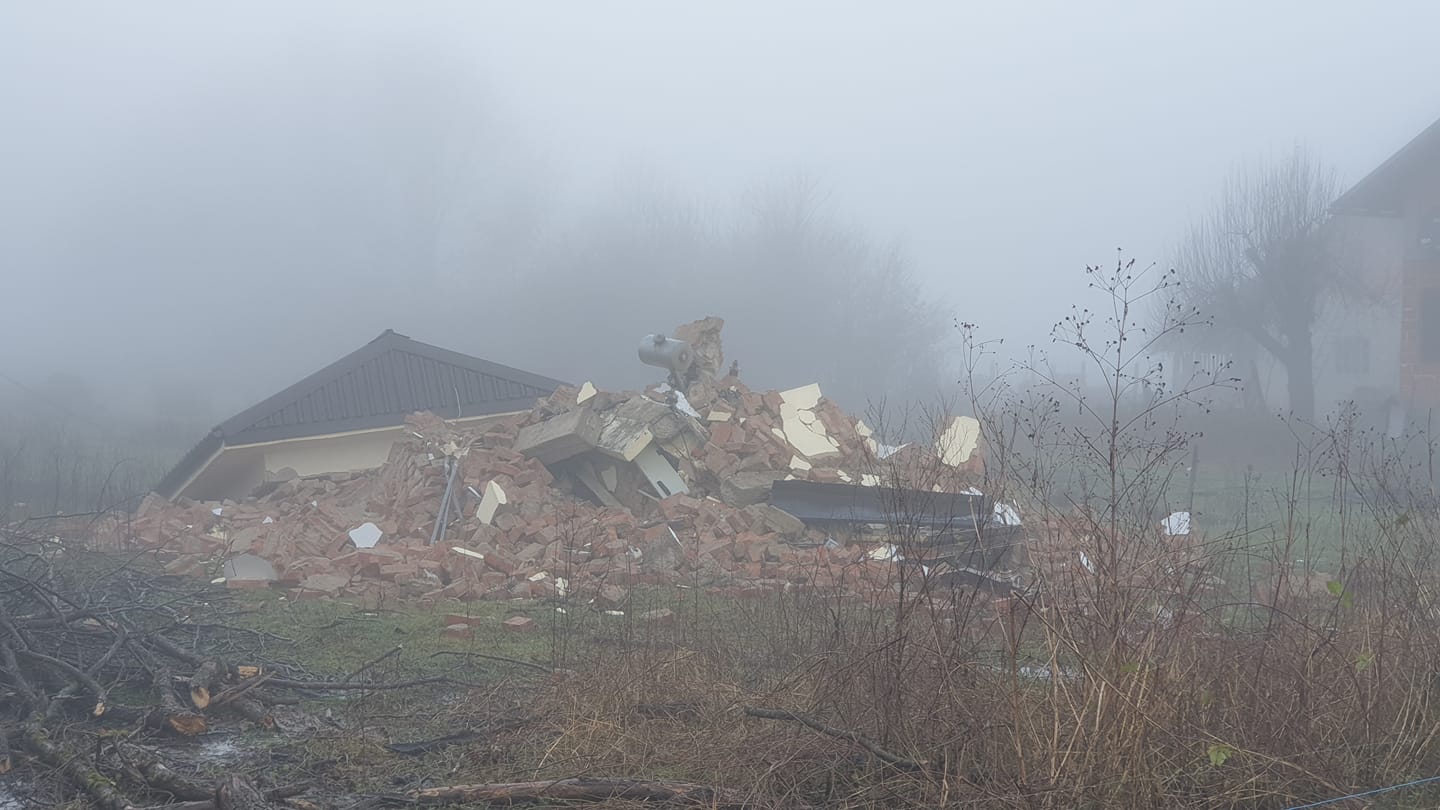
Kako nisam bio siguran kakvo će biti stanje na cestama, od kuće u Varaždinu sam krenuo u 5 ujutro, a u Zagrebu usput pokupio kolegu s TCN-a Marca Rowlandsa. Kako nikad prije nismo radili ništa slično, odlučili smo da ćemo zastati u Majskim Poljanama, selu u kojem je stradalo četiri od sedam žrtava, a u kojem načelnik tvrdi da je samo 10 % zgrada neoštećeno.
Načelnik nije pretjerivao.
Magla je na trenutke bila gusta, a mi smo postajali sve očajniji dok smo vozili po uskoj glavnoj cesti. Kako se zajednica može oporaviti od nečeg ovakvog? Ponovo izgraditi?
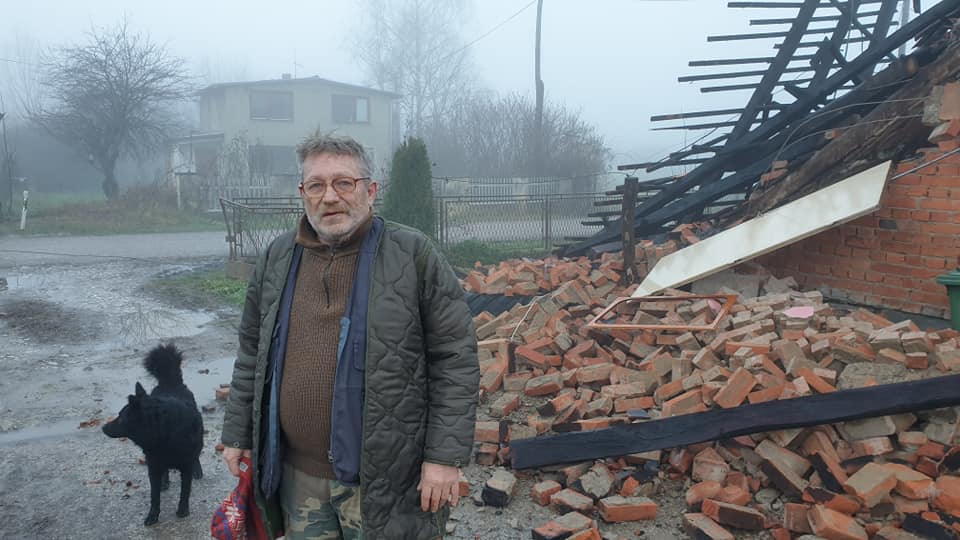
Šokiran čovjek sjedi uz cestu. Kuća mu je uglavnom u dobrom stanju, ali on je sam i nema struje. Susjedi mu nisu tako dobro prošli. Kad je čuo da sam Englez, rekao mi je da je ratni veteran i da se borio uz jednog Engleza u Vinkovcima 1992. u 109. brigadi.
„Jel se on možda zvao Steve?“, upitao sam ga, jer se radi o jedinom Englezu kojeg sam znao u Vinkovcima a koji je ratovao u Hrvatskoj (i SVAKAKO jedinom Englezu koji je otvorio pub u polju usred ničega u istočnoj Hrvatskoj).
„Da, Steve. Vjerojatno me se ne bi sjetio niti prepoznao nakon svih ovih godina.“ Predložio sam da probamo, pa smo Steveu poslali poruku s gornjom fotografijom, na što je on odgovorio da mu je to lice poznato. Svijet je u Hrvatskoj doista malen.

I dok je Vladimirova kuća bila u pristojnom stanju, to se ne bi moglo reći za kuću susjeda prekoputa. Jučer se radilo o kući u kojoj su živjeli ljudi. Danas, u njoj sam izbrojao desetak konja, od kojih je jedan bio vezan za traktor. Svi su bili u šoku.
Mnogim sam kolegama iz medija koje sam danas sreo ispričao o konjima i pojavili su se na nacionalnoj televiziji u vijestima, pa sam čuo da je u tu kuću stigao kontejner pomoći, uključujući i hranu za konje.
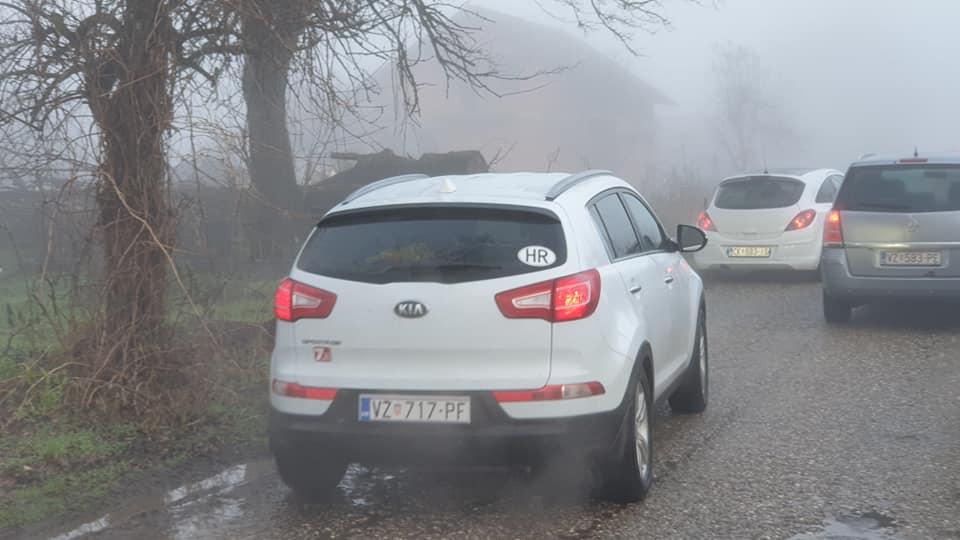
Naš auto nije bio jedini s varaždinskim tablicama u Majskim Poljanama. Bilo nas je iz Varaždina, Čakovca, Zagreba, Vukovara, Bosne. Volonteri, Hrvati i stranci s punim automobilima hrane, deka, vode, odjeće, tražili su domaće stanovništvo da bi im pomogli da prebrode ovaj težak period.
Vladimiru je dan ranije već došla pomoć od Crvenog Križa, donijeli su mu hranu, odjeću i pokrivače. Uzeo je samo malo hrane, jer bi drugima moglo više trebati.
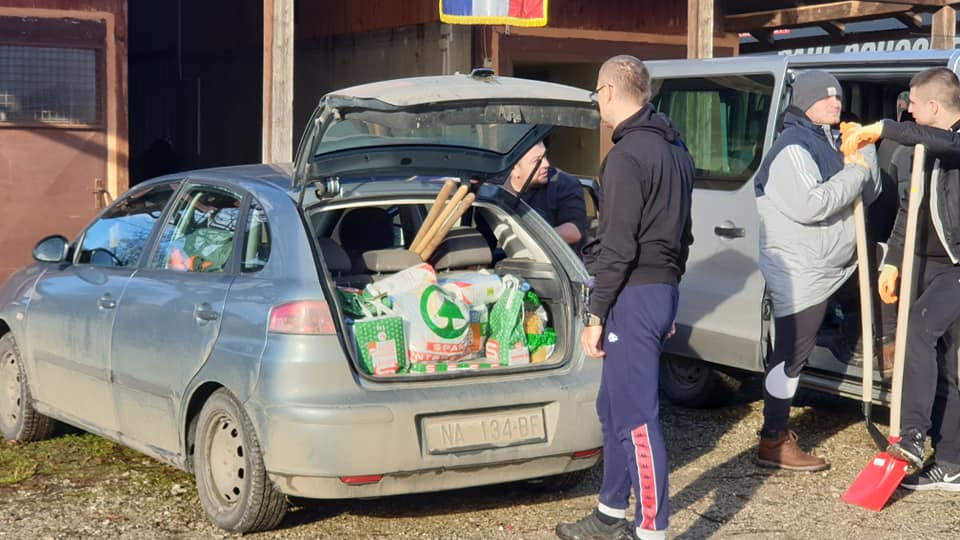
To je bila slika dana – automobili iz cijele Hrvatske (ovdje prikazan iz Našica) napunjeni namirnicama da bi pomogli ljudima Majskih Poljana, Gline, Petrinje i Siska.
Od svih zemalja u kojima sam živio ili kroz njih putovao, nikad nisam vidio naciju koja se tako ujedini u vremenima krize ovako kako se Hrvatska ujedini. Dok mi se srce slamalo od scena užasa na sve strane, jednako je tako bilo puno ponosa na sve što čine ljudi u mojoj odabranoj domovini.
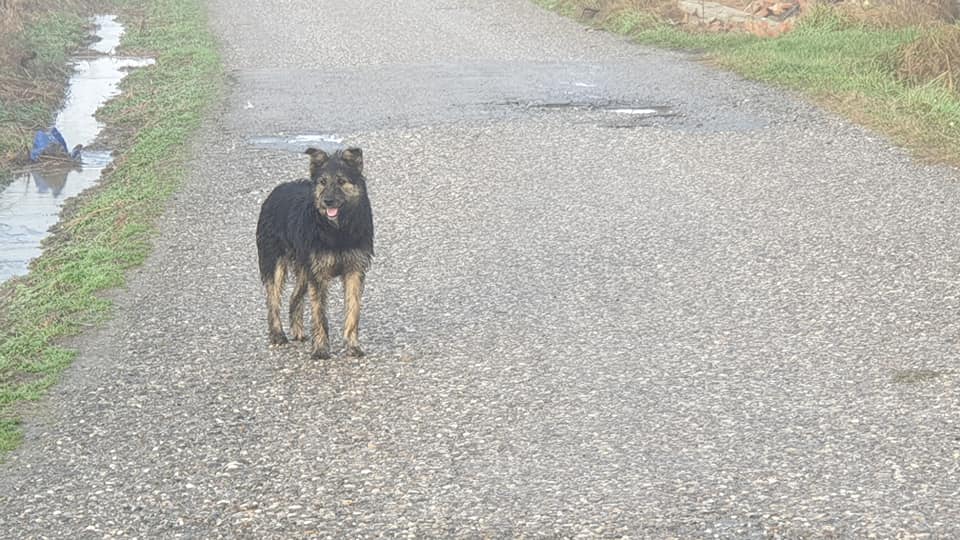
Ljudi Majskih Poljana vjerojatno su bili zbunjeni svime što se dogodilo, a jednako su tako zbunjene bile i životinje. Od onih konja do ovaca i mnogih pasa koji su ili lutali okolo ili čuvali kuće koje više ne postoje, usamljenost i izgubljenost kod omiljenih ljubimaca na mene je ostavila najjači trag danas.
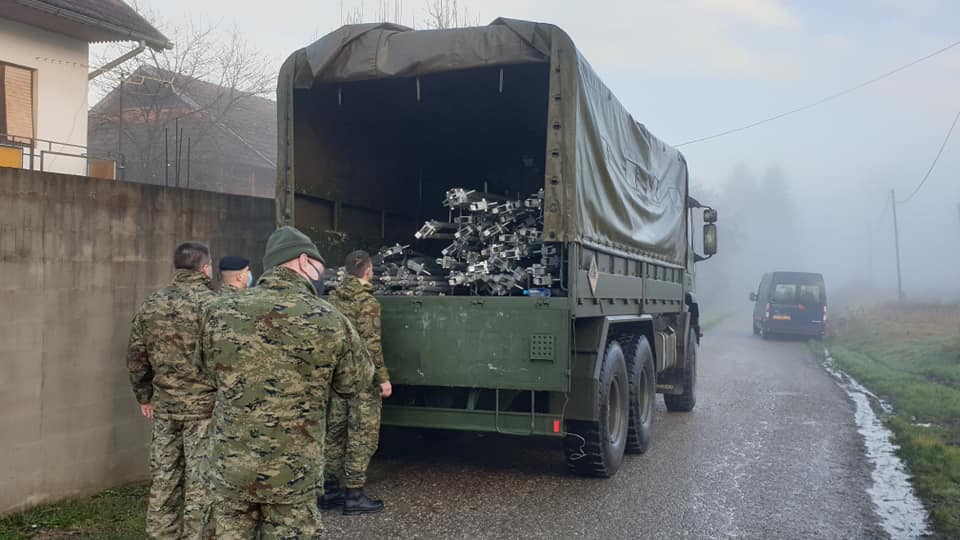
Prošli smo kroz maglu na drugu stranu Majskih Poljana, gdje nas je dočekala Hrvatska vojska, koja je među prvima došla odgovoriti na izvanrednu situaciju.
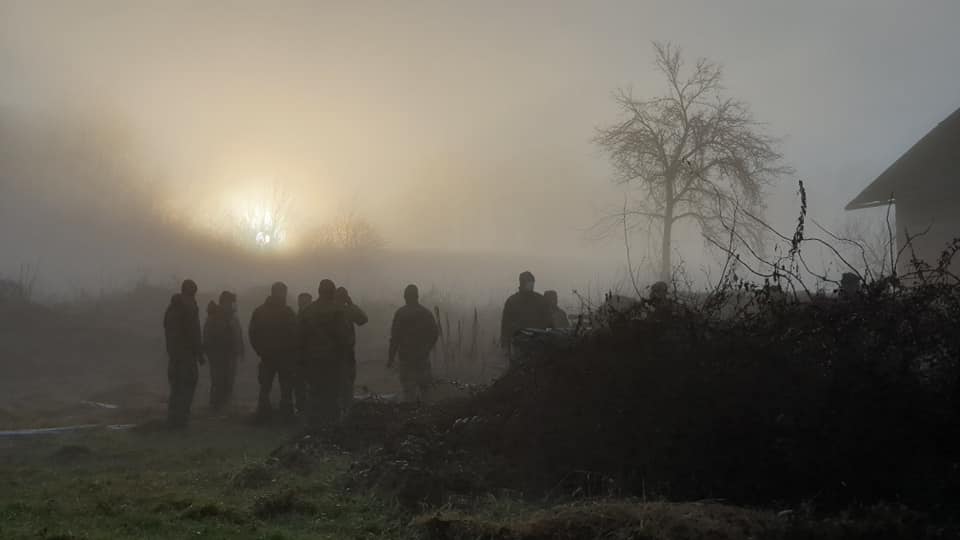
Uskoro su bili vrijedni postavljajući privremena skloništa za stanovnike.
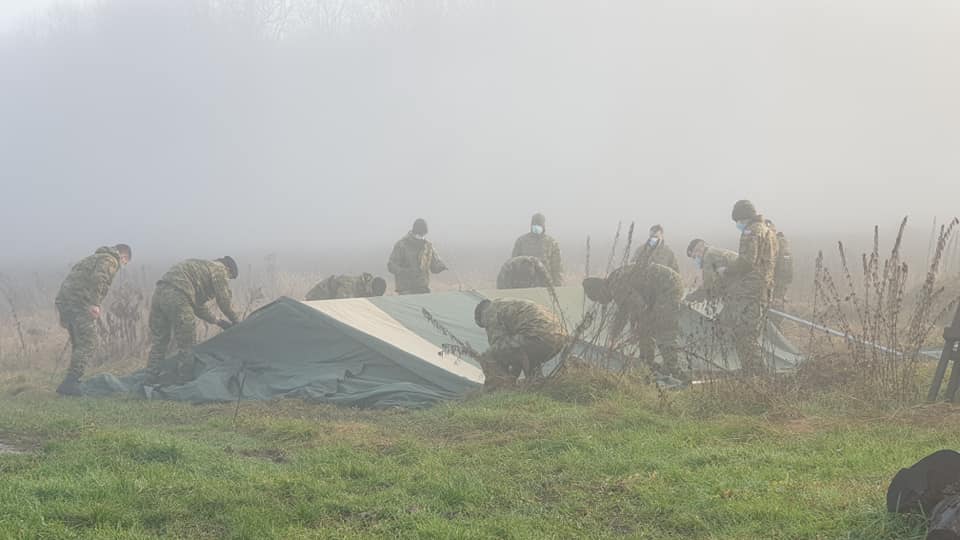
Sjajan timski rad, očito dobro uvježban.
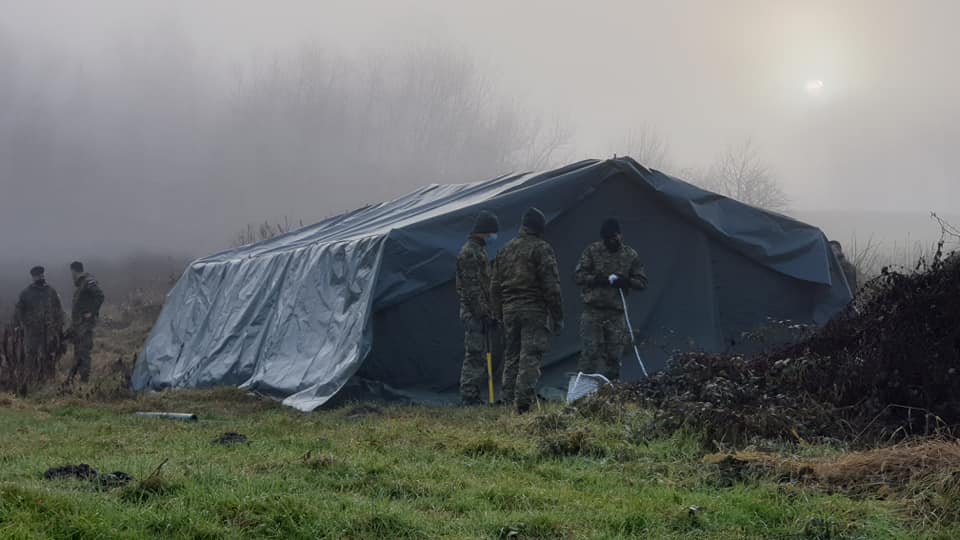
I za 15 minuta, zadatak izvršen, prvi šator postavljen.
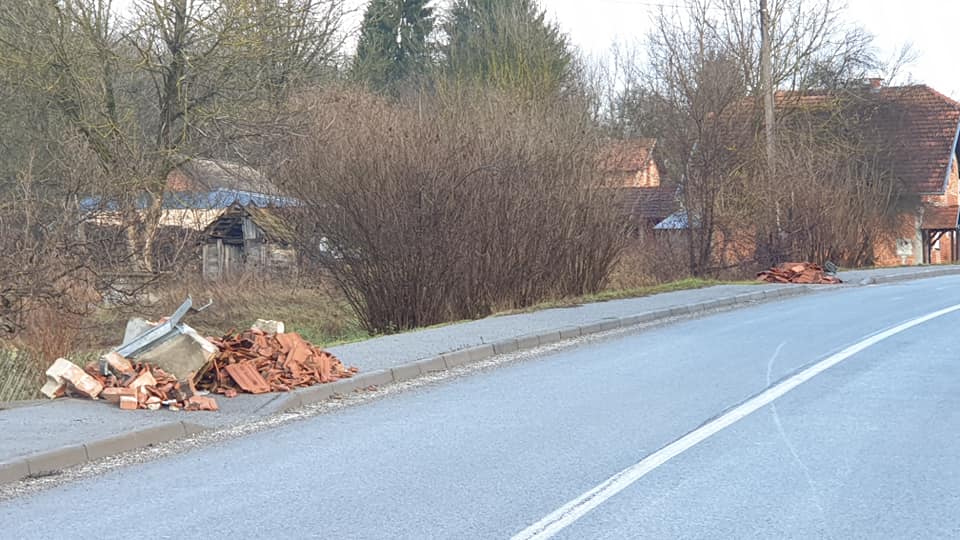
Uputili smo se prema najbližem gradu, Glini, koja je također teško oštećena. Putem, uz rub ceste vidjeli smo hrpe smeća od oštećenih kuća. Uredno složene, čekaju da ih netko dođe pokupiti.
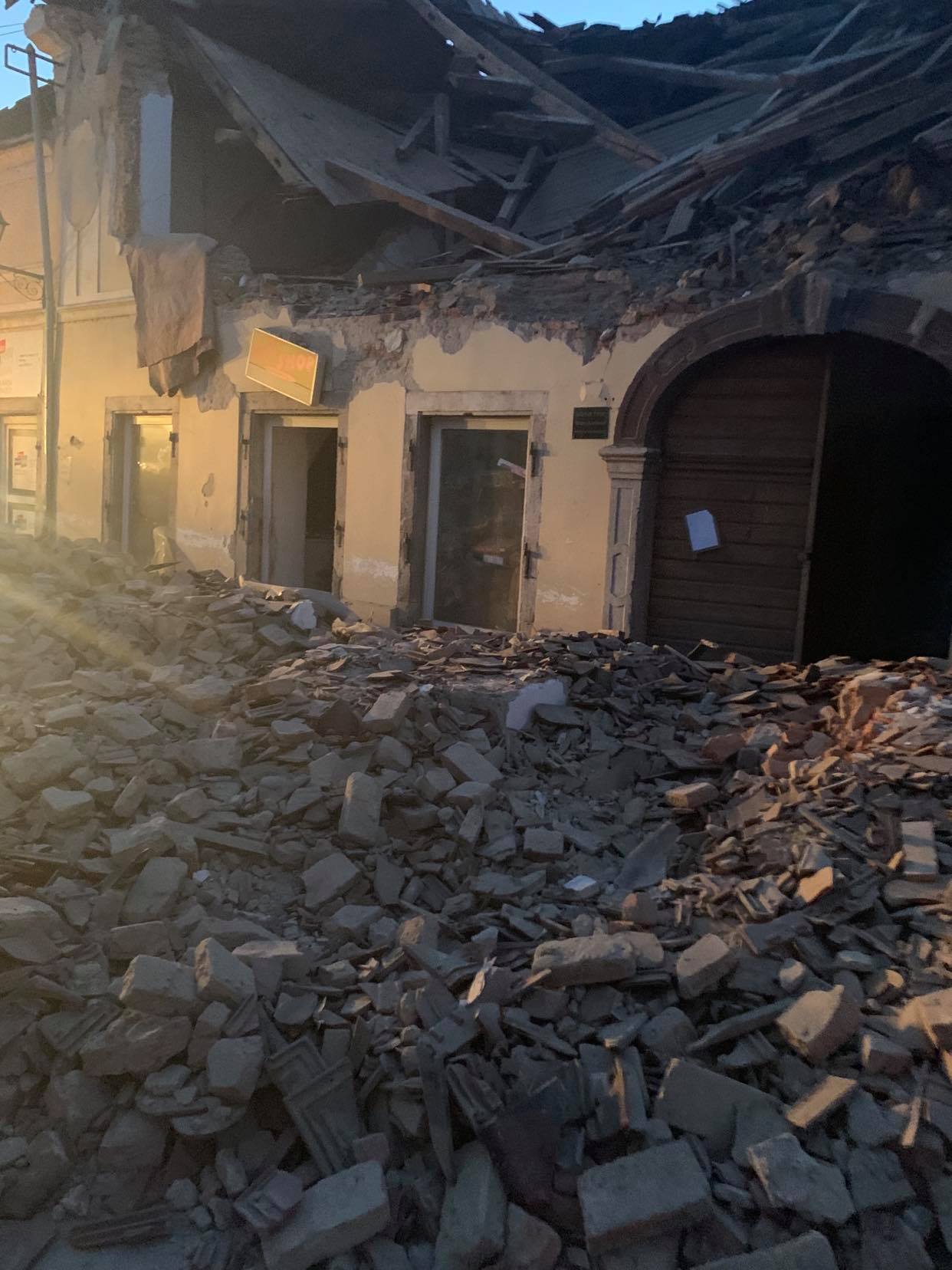
Ovu mi je fotografiju Petrinje prijatelj poslao jučer. Čišćenje ovoga će trajati zauvijek, čini se.
Nismo mogli vjerovati koliko su ulice Gline čiste, dok nismo vidjeli ekipe domaćih ljudi u akciji.
Jedan dio očišćen, idemo dalje.

Neke stvari neće biti moguće popraviti.
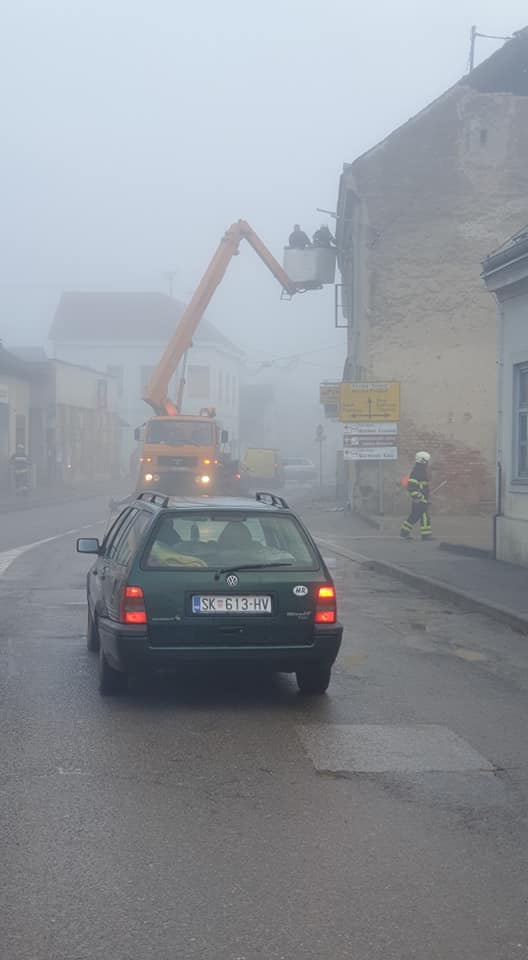
Vatrogasci su davali sve od sebe, uklanjali otpad i nastojali zgrade učiniti što sigurnijima. Mnogi su oštećeni dimnjaci uklonjeni u regiji tijekom dana.
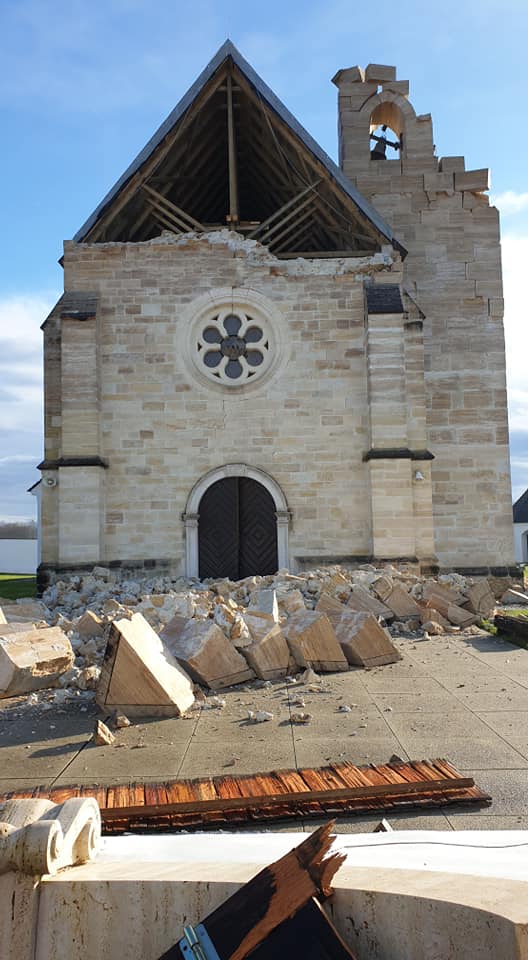
Iz Gline smo krenuli prema Petrinji, ali putem je bilo svašta vrijedno pažnje. Prekrasna kamena crkva u Gori, žrtva potresa, s ogromnim komadima kamena koji leže u vrtu. Jedan stanovnik rekao mi je da je crkva stara tek nekoliko godina, jer je bila obnovljena nakon Domovinskog rata.
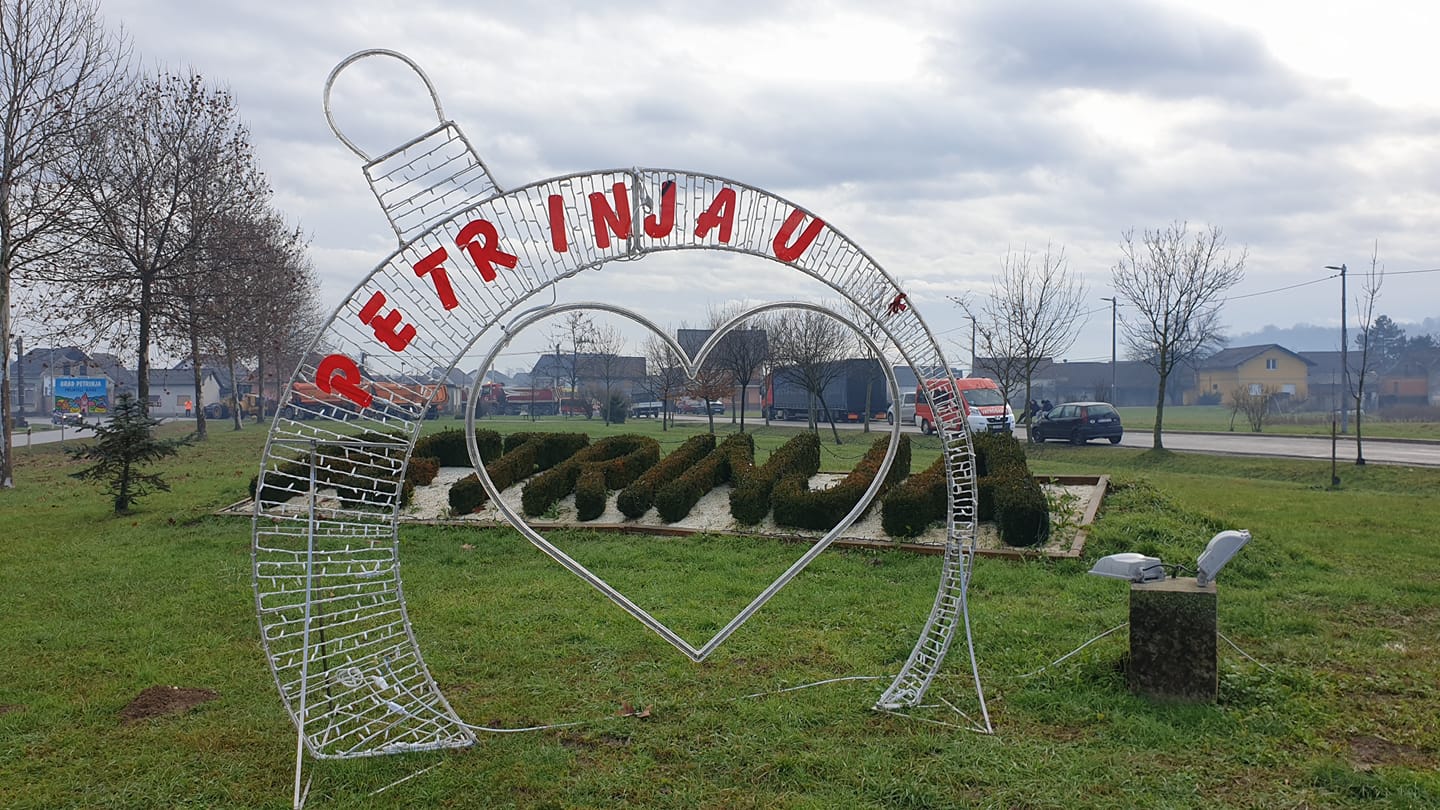
Ulaz u Petrinju.
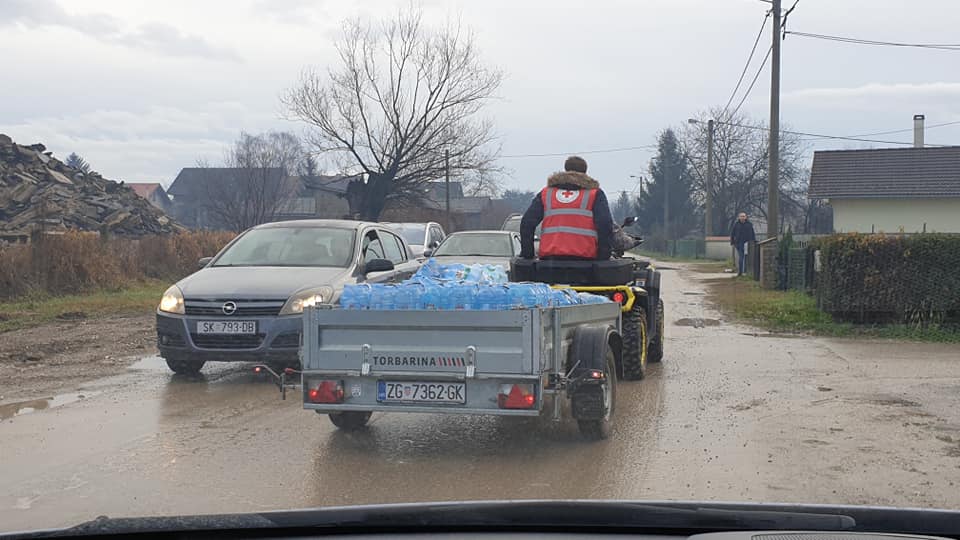
Kako nismo imali neki jasan plan, odlučili smo slijediti stvari koje su nas zainteresirale. Kao što je, naprimjer, bio Crveni Križ koji je na quadovima dostavljao vodu.
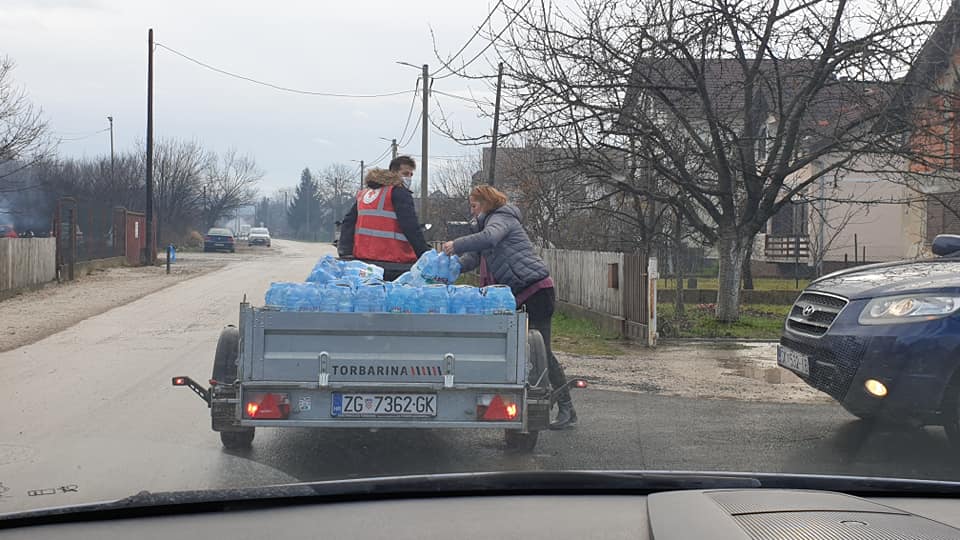
Nije ih bilo lako pratiti dok su išli od kuće do kuće. Stanovnici su izlazili da bi preuzeli ono što im pripada. Brzo, inovativno i vrlo učinkovito.
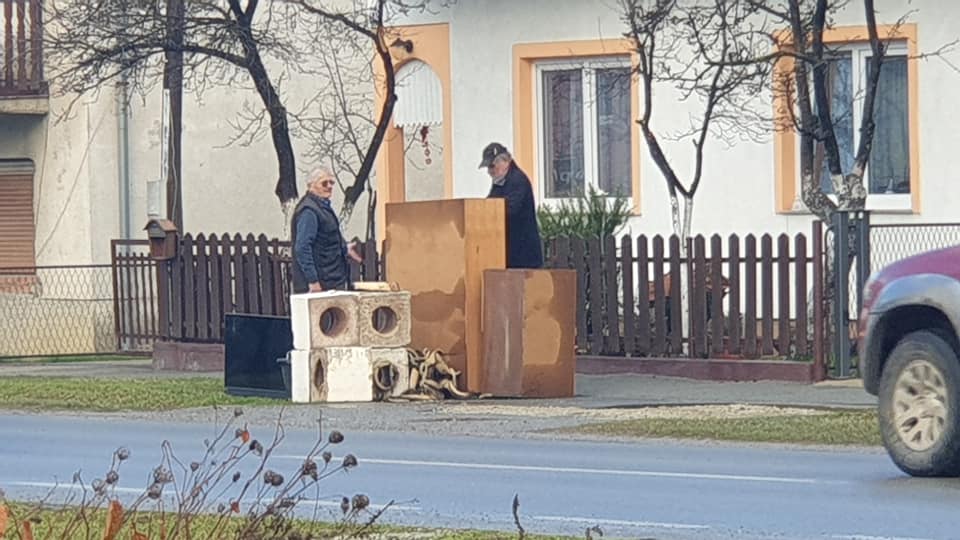
Među najtužnijim prizorima svakako su bile brojne obitelji koje su sjedile u dvorištima, na otvorenom, s osnovnim namirnicama i vodom. Neki su samo stajali i izgledali izgubljeno. Uz prijetnju od novih podrhtavanja, bez struje i bez mjesta gdje su mogli otići, mnogi su samo sjedili vani na hladnom i čekali. Mogli smo tada snimiti fantastične fotografije, ali nismo htjeli biti toliko nametljivi.

Ali, jedan od mojih kontaka s LinkedIna postavio je ovaj kolaž koji vam to može približiti.
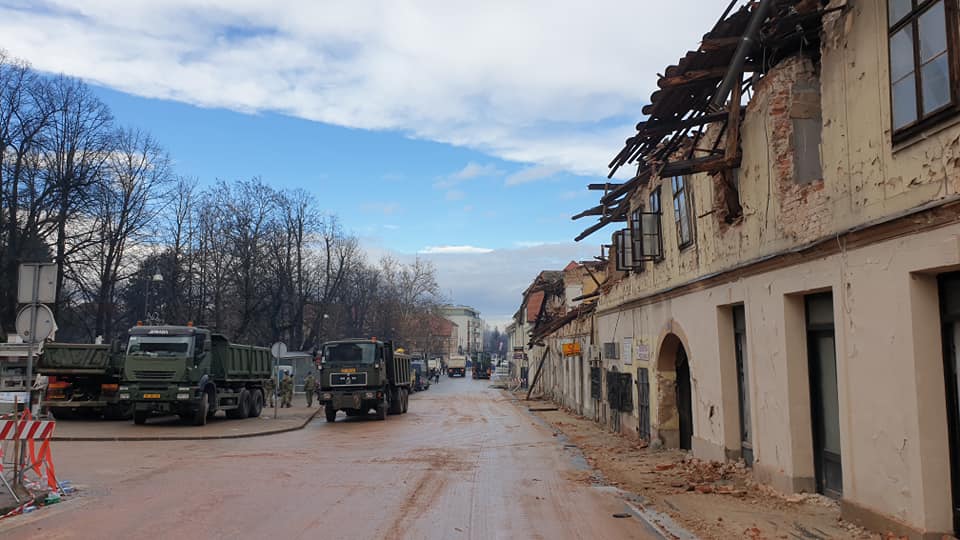
Stigli smo i do centra Petrinje, čije su srušene zgrade postale prepoznatljivo povezane s ovom posljednjom katastrofom.
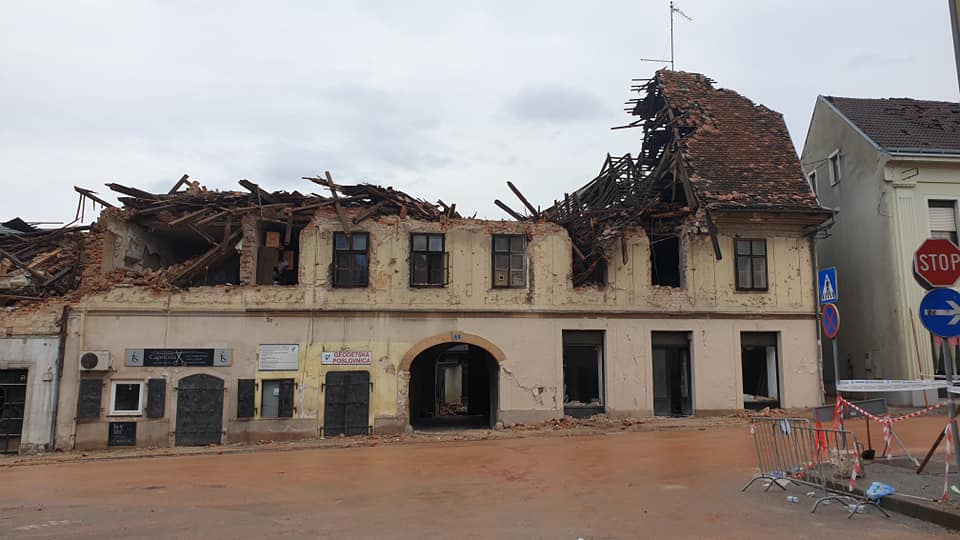
Zastrašujuće.
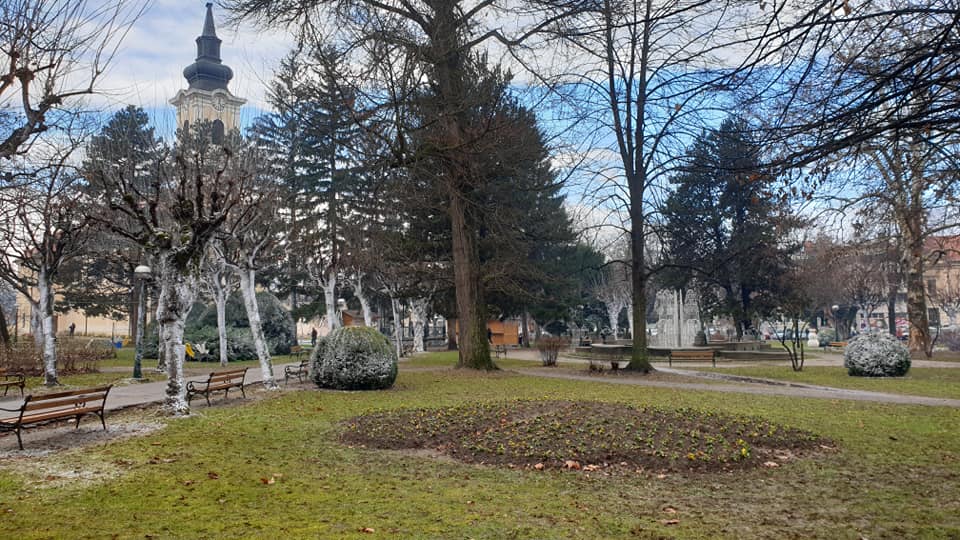
Ali onda, čudo… Pogledaš na drugu stranu, prema sredini trga i ugledaš Advent u Petrinji, koji izgleda kao da razumije ništa od onoga što se oko njega događa.
Video obilazak dvije Petrinje na jednom trgu.
I ponovo sam se sjetio fotografije mog prijatelja od prethodnog dana – ulice Petrinje bile su nevjerojatno čiste, tako brzo nakon katastrofe.
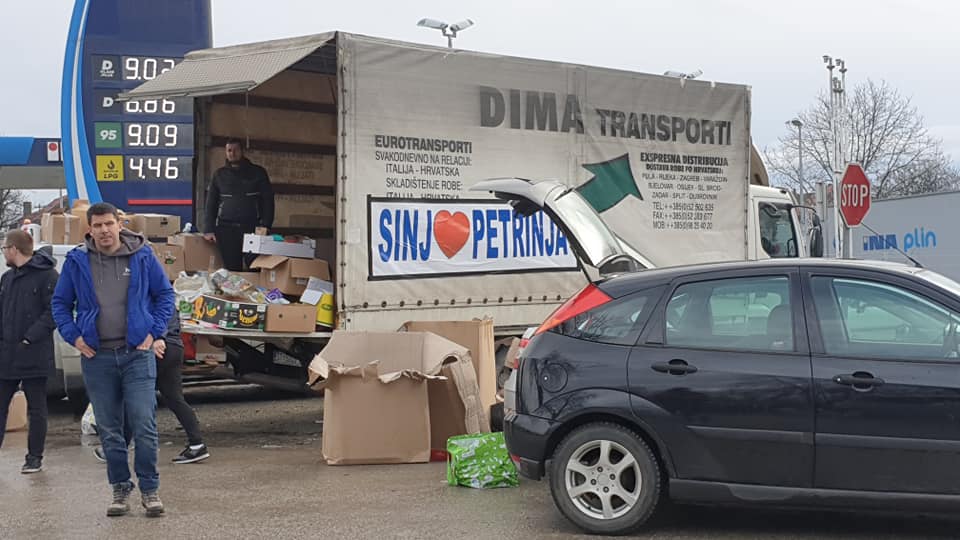
Drugi razlog zašto su ljudi možda sjedili u svojim dvorištima je to što ništa nije bilo otvoreno. Restorani i kafići zatvoreni su već tjednima zbog korone, ali ovdje su bili zatvoreni i dućani i supermarketi. Ali nije bilo baš šanse da ljudi u Petrinji ogladne, jer je stigla pomoć iz cijele Hrvatske. Zaustavio sam se da bih poslikao kako „Sinj voli Petrinju“. Čovjek me sa snažnim sinjskim naglaskom pitao što trebam. Odgovorio sam da bih rado jedno hladno pivo. Kaže on meni: „Nemamo pivo, ali imamo mnogo drugih stvari, uzmi što trebaš!“ Objasnio sam mu da se šalim, da sam novinar i da mi ne treba ništa ali da mu zahvaljujem na ponudi.
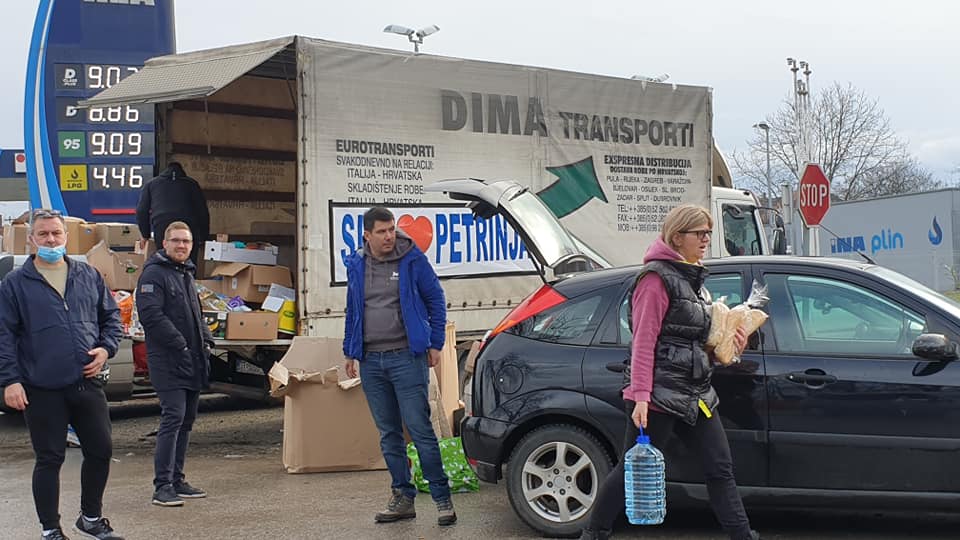
Prišla mu je žena pitati ga ima li što kruha i uzela je što je trebalo njoj i njenoj obitelji. Takve su se stvari događale po cijelom području, pokloni ljudi iz cijele zemlje danas – to je zaista bilo dirljivo.
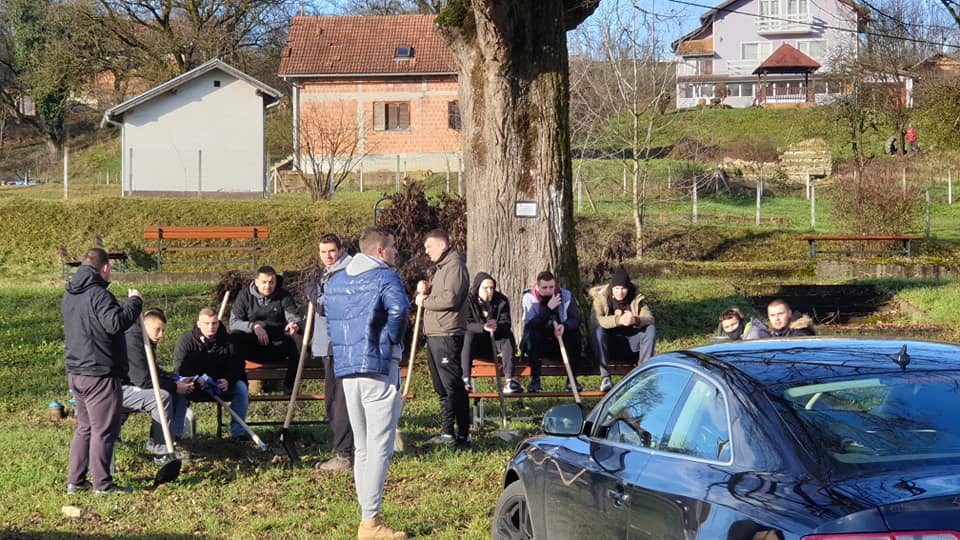
I svugdje je bilo još volontera koji su čekali da dobiju sljedeći zadatak. Sve je bilo dobro koordinirano zahvaljujući lokalnom stožeru civilne zaštite.
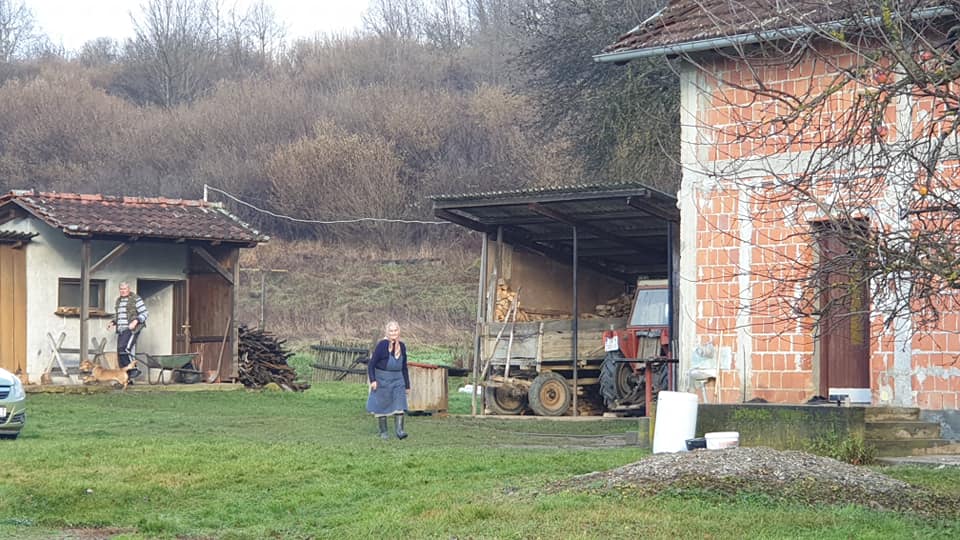
Marc je htio slikati nešto uz cestu, a ja sam se našao kako gledam kuću ovog para koja je bila oštećena, uz prioritet da se popravi krov.
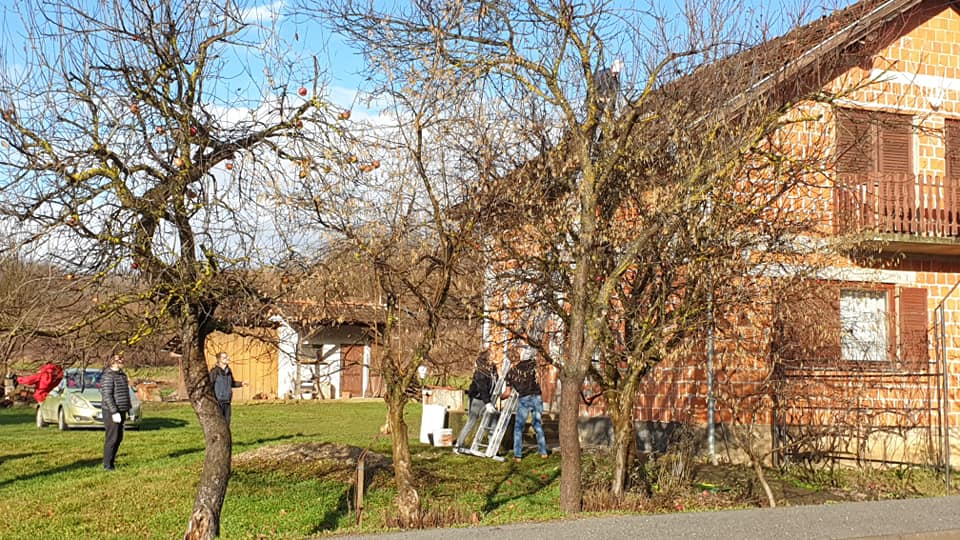
Za par minuta odnekud se pojavila grupica volontera s ljestvama i prionuli su poslu. Takve su se stvari događale po cijelom području, volonteri iz cijele zemlje – to je zaista bilo dirljivo.
Morao sam stići na vrijeme na jedan sastanak – konačno upoznati Josipa Granića i fantastičnu ekipu iz Hrvatske Gorske Službe Spašavanja, čije je sjedište bilo na parkiralištu Lidla.
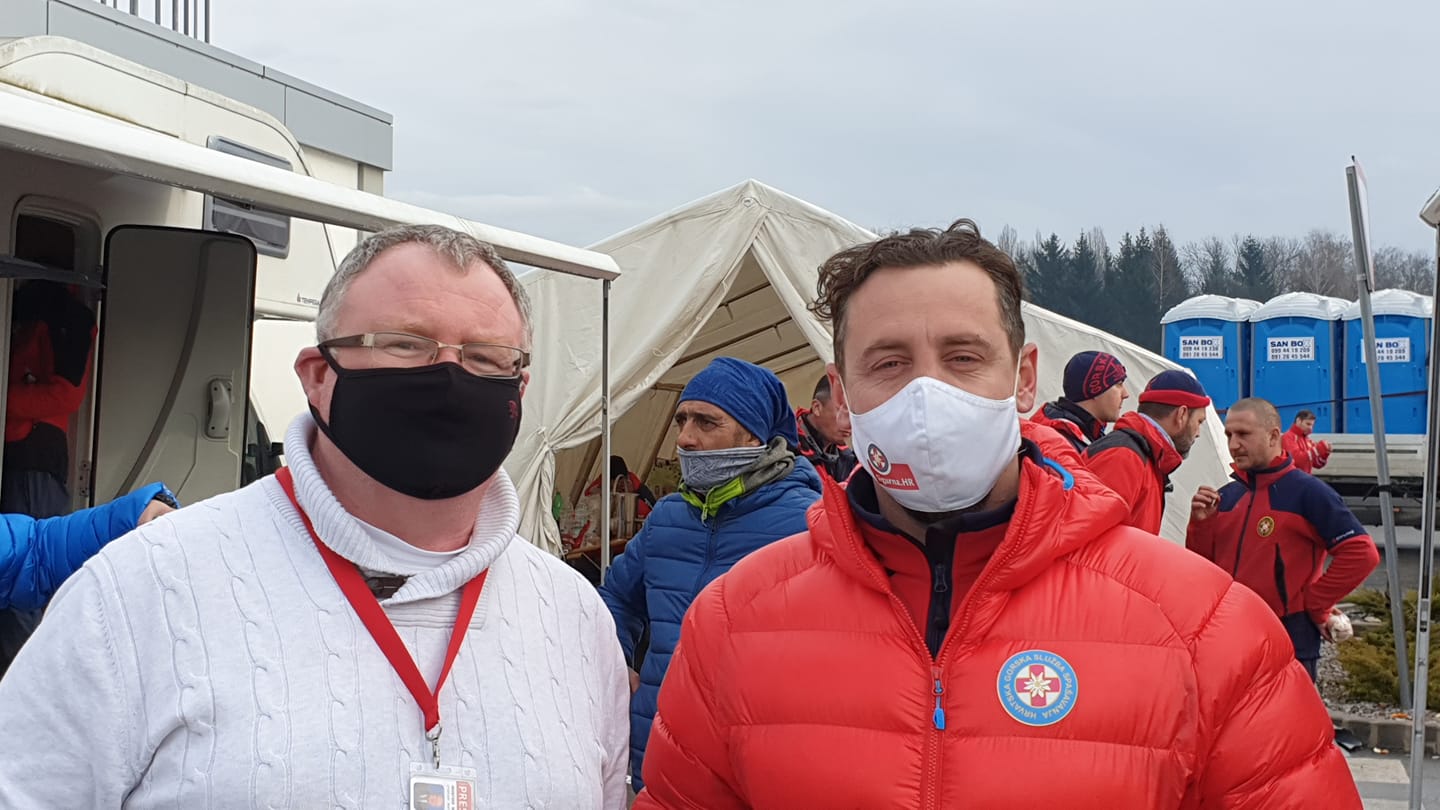
Nas dvojicu povezuje to što smo podjednako neočekivano postali muški modeli (dobro, za njega je to bilo očekivanije nego za mene) u Varteksovoj kampanji „Nesavršen muškarac u savršenom odijelu“. Josip je fan TCN-a i mnogo je pomogao kad smo radili sjajan članak o fantastičnoj ekipi HGSS-ovaca ranije tijekom ove godine - Meet HGSS The Croatian Mountain Rescue Service.
Iako je radio cijelu noć i nije ništa spavao, Josip je pronašao vremena za intervju koji je dao Marcu, a koji možete pročitati ovdje.
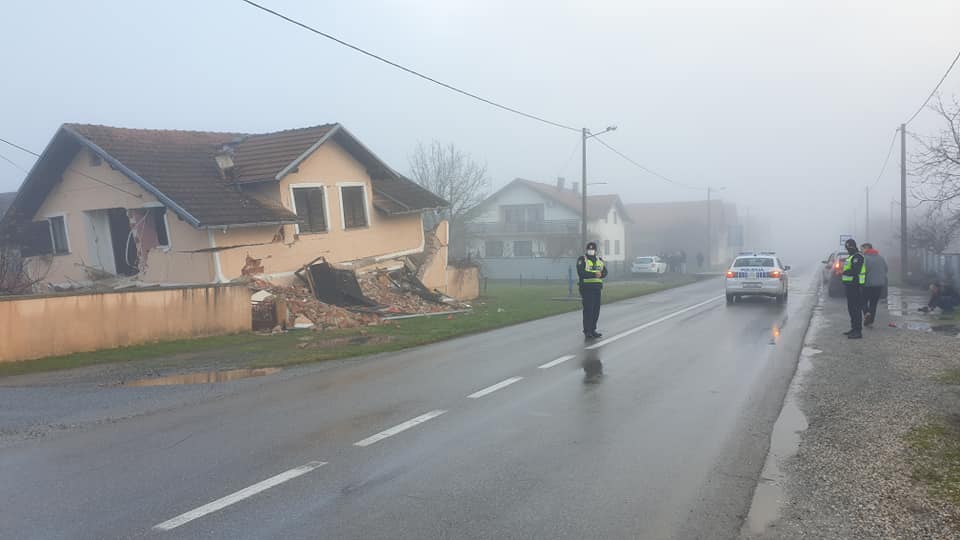
Policijske patrole u pogođenom području. Očekivao sam više zagušenja prometa, ali policija je uspijevala postići da promet teče.
Ono što policija nije mogla kontrolirati je bilo još potresa. Sjedio sam sam u autu dok je Marc fotografirao, prvo se auto počeo ljuljati s jedne na drugu stranu, a onda sam shvatio da se tlo definitivno pomiče – kasnije sam saznao da se radilo o još jednom potresu, ovaj put 4.1. Posve uobičajeno u Hrvatskoj 2020. godine.
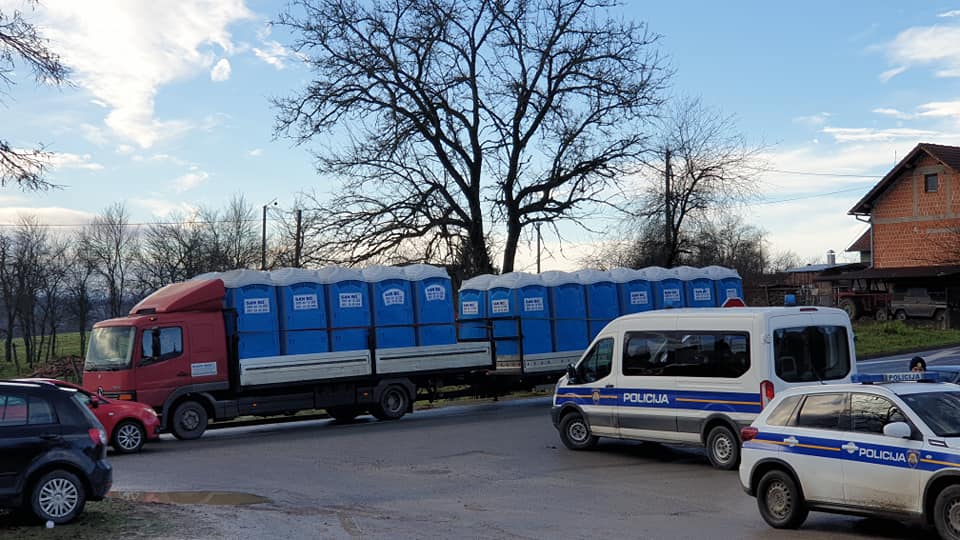
Promet je i dalje tekao, donoseći ključne stvari u ona mjesta koja su ih najviše trebala.
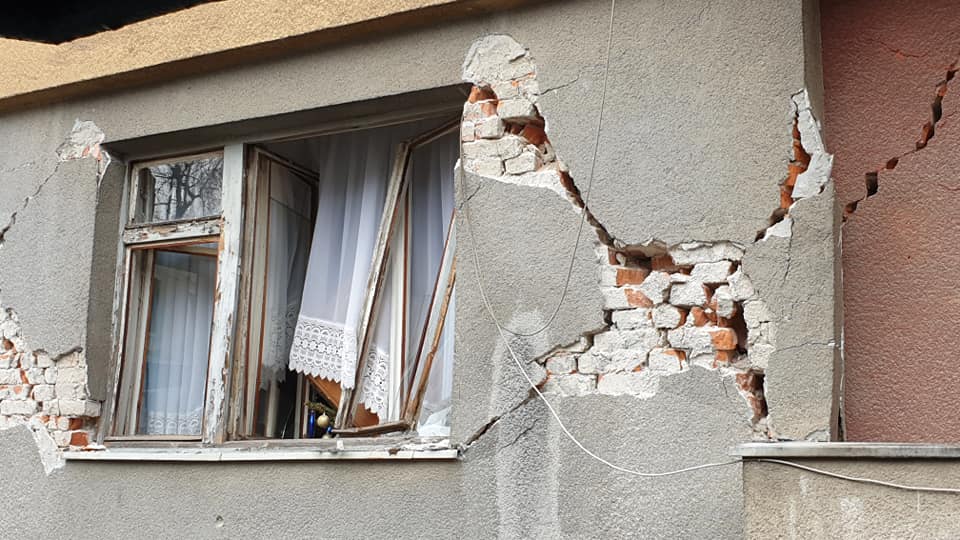
Štete je bilo svugdje i svi su je mogli vidjeti.
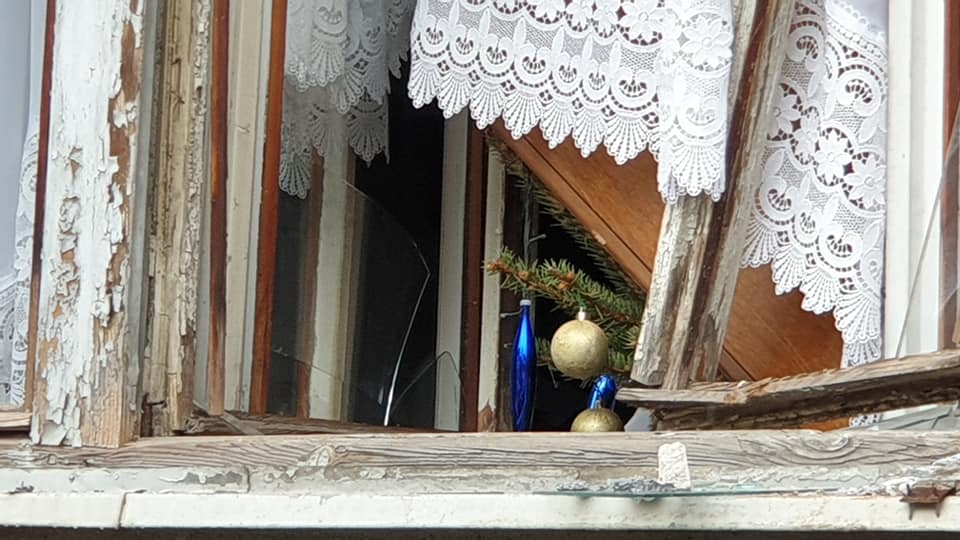
Uz neka podsjećanja na sretna vremena blagdana, prije nekoliko dana, kada je život bio potpuno drukčiji.
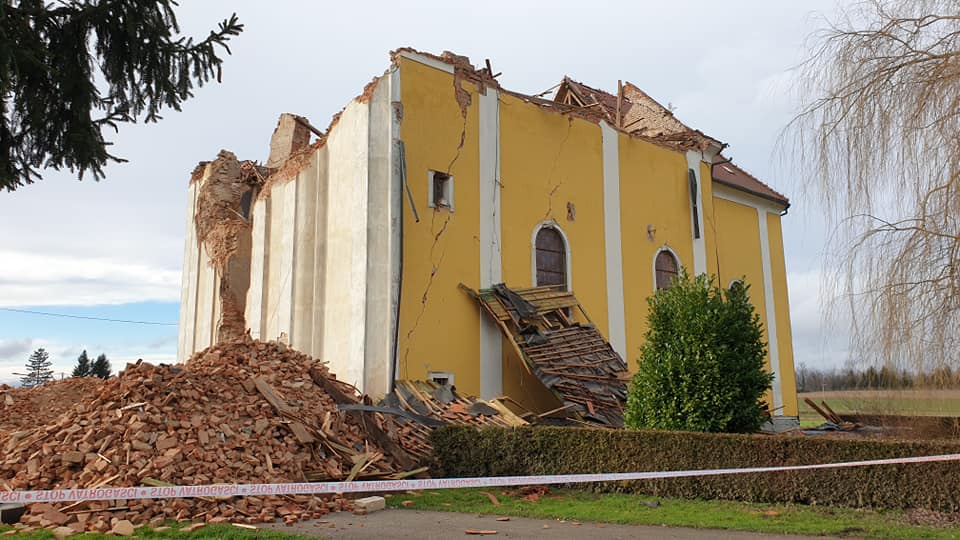
Planirali smo zastati na još jednom mjestu prije povratka u Zagreb – kod crkve u selu Žažini. Njena prednja strana i zvonik više ne postoje.
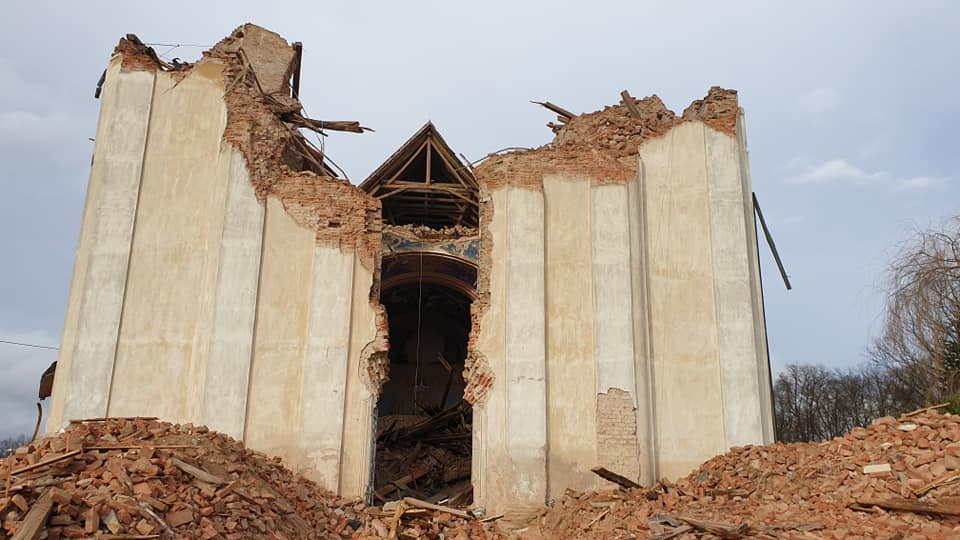
Otrgnuti od ostatka zgrade.
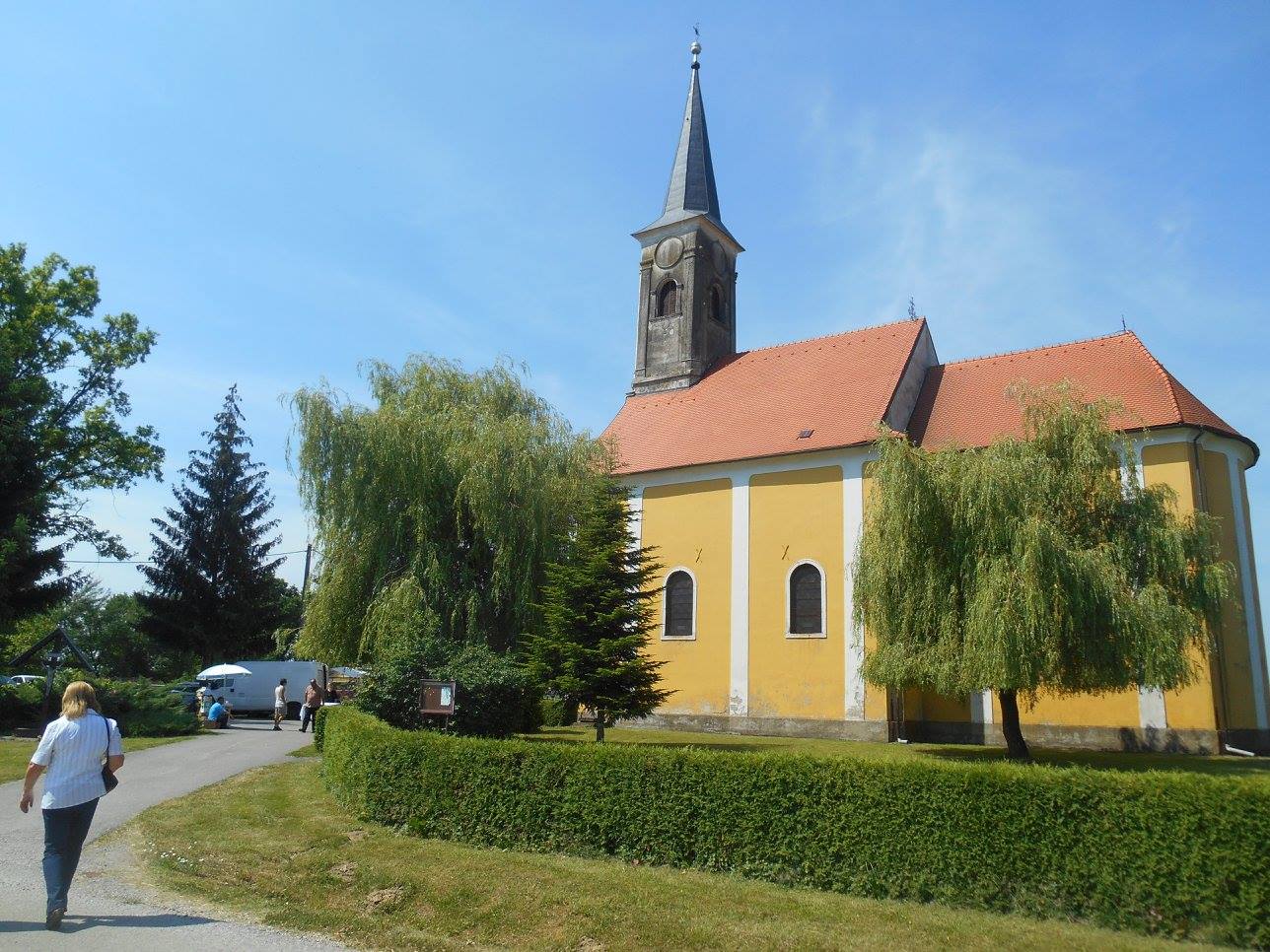
Ta je crkva ovako izgledala samo 24 sata ranije. Kasnije sam saznao da je orguljaš čistio orgulje u crkvi kada je krenuo najjači potres, te je tragično izgubio život u crkvi.
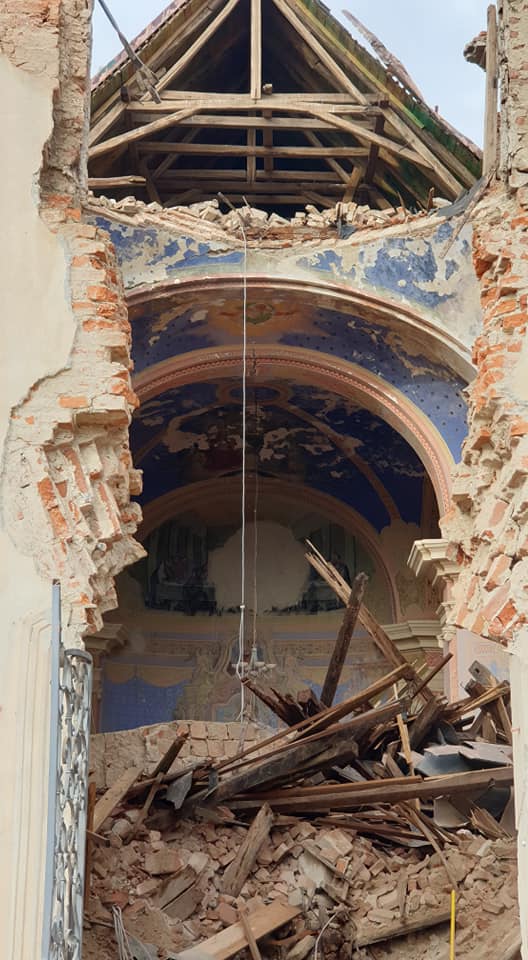
Freske na zidovima u unutrašnjosti mogle su se i dalje vidjeti.
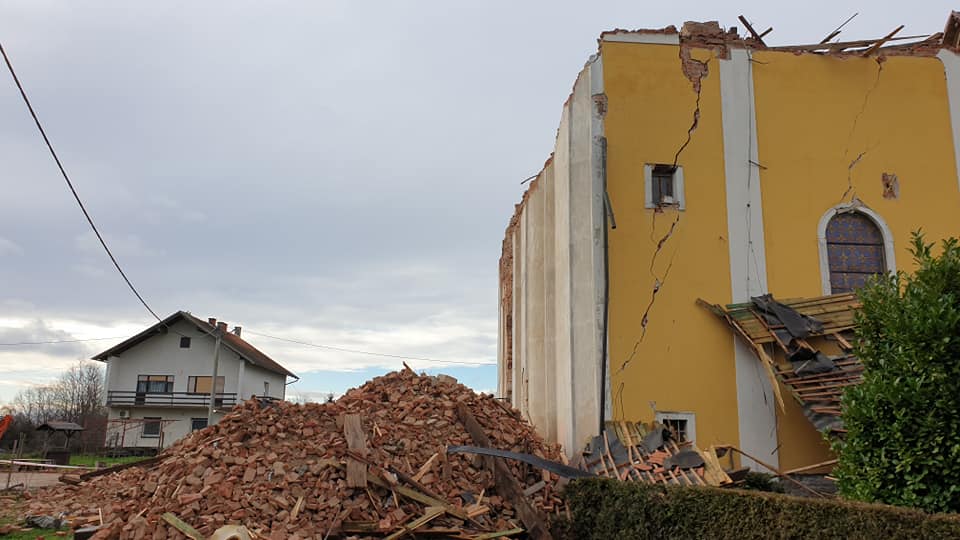
Novije protiv staroga, jer je susjedna kuća prošla bez oštećenja. Ali kao što smo vidjeli u Gori, to što je zgrada novija ne znači nužno da je sigurna od potresa.
Vraćali smo se u Zagreb u relativnoj tišini, svaki izgubljen u svojim mislima, trpeći posljedice ranog ustajanja i trauma koje smo vidjeli taj dan.
Težak je to bio dan, sasvim sigurno, ali i ugrijao nam je srca. Hrvati su najotporniji ljudi koje znam, a teškoće u njima bude najbolje. Postoje tisuće herojskih primjera svaki dan u ovom trenutku i plješćem svakome od njih koji je preuzeo na sebe dio odgovornosti.
Nemojmo zaboraviti ni velikodušnost dijaspore i međunarodne zajednice. Odgovor na ovu katastrofu zaista je impresivan, kao što je bila i hitna reakcija. Oni koji trebaju pomoć zaista je i dobivaju, a donacije svakako pritom pomažu.
Za više podataka o potresu u Petrinji pratite današnji članak s najnovijim vijestima. Da biste saznali kako možete donirati novac, hranu, građevinski materijal i humanitarnu pomoć, kliknite ovdje i ovdje.
Milanovic Visits Petrinja and Glina: It Can Always Be Better, But Job Well Done
ZAGREB, 1 January, 2021 - President Zoran Milanovic on Friday spoke with citizens and representatives of state services helping take care of residents of Petrinja and Glina, hit by a strong earthquake on December 29, noting that one can always do better but that a good job was being done.
"I can say that I'm pleased with the coordination of services on the ground. Everything that can be done is being done. People are working selflessly, both those whose job that is and those who are doing so because of the culture of heart and love. Two days have passed since the earthquake, just a few more days and everything will be functioning. One can always do better, but things are being done well," Milanovic told reporters while visiting Petrinja and Glina.
He said the people are scared and afraid to sleep in their homes. "It's obvious it will take a few weeks for things to settle down," he said.
Speaking about his expectations of 2021, Milanovic said that he was cautious but was not afraid. "I'm certain the resilience of our people will be crucial. It will be a difficult year but I am confident that it will be better than the last one," he said.
Asked how long the reconstruction of the earthquake-hit area could last, Milanovic said that the area had suffered extensive damage in the 1991-95 war and that it had been losing population to emigration also before the latest disaster.
"The damage is huge but it will be repaired. Millions of euros will come from the EU," he said, adding that reconstruction should not be spontaneous but organised by the state.
"Now is an opportunity to rebuild what was destroyed but also to give new hope and resources to the people. The government must find a way to provide for the people who have lost their homes," said Milanovic.
The president held a working meeting in Petrinja with representatives of the Civil Protection, the Red Cross, the Croatian Mountain Rescue Service and the Croatian Army, which was also attended by Army Chief-of-Staff Admiral Robert Hranj, Defence Minister Mario Banozic, War Veterans' Minister Tomo Medved and Petrinja Mayor Darinko Dumbovic.
The Office of the President said that Milanovic, who is Armed Forces' Supreme Commander, offered his best wishes to members of the Croatian Army and other services for the New Year, thanking them for everything they were doing for earthquake victims.
For more on the Petrinja earthquake, follow our dedicated section.
More than 2,000 Buildings Damaged in Tuesday Earthquake
ZAGREB, 1 January, 2021 - More than 2,000 buildings were damaged in a devastating earthquake that struck Sisak-Moslavina County on Tuesday and so far 1,000 inspections have been conducted and more than 5,000 applications for inspection have been submitted.
The fire-fighting station in Sisak is unusable but Sisak firefighters have conducted 2,500 interventions and saved more than 30 people from the rubble, during which three firefighters sustained light injuries.
HGSS mountain rescue teams and search dogs managed to locate six people under rubble and two people were found alive.
About one hundred police officers have been deployed to surrounding villages and they warn of reports about the alleged theft of humanitarian aid that has been delivered to the area.
There are about 1,500 civil protection officers from all over Croatia currently stationed in Sisak-Moslavina County.
Structural engineers are in the field inspecting public buildings which need to be put into operation first, the civil protection authority tweeted on Friday.
There are about 100 structural engineers in the field who have conducted 1,000 inspections and more than 5,000 requests for inspection have been received.
The authority said that people who have been sleeping in their cars since the quake struck are being evacuated.
Antigen testing is being organised in makeshift camps that have been erected in Petrinja, Glina, Sisak and Topusko.
Fifteen civilians with critical conditions who have been staying in the Petrinja barracks have been examined and transferred to the hospital in Popovaca. Residents of a nursing home will return to the home, which has been declared as safe.
For more on the Petrinja earthquake, follow our dedicated section.
EMSC Reports 3.6 Magnitude Quake near Sisak (January 1, 13:13)
ZAGREB, 1 January, 2021 - A 3.6 magnitude quake rocked Croatia around 1.13 p.m. on Friday, with the epicentre four kilometres west-southwest of Sisak, the European Mediterranean Seismological Centre (EMSC) reported.
The quake occurred at a depth of two kilometres and its epicentre was 48 kilometres southeast of Zagreb.
After a moderate tremor 45 minutes later, at 1.40 and 1.44 p.m. two weaker quakes occurred, measuring 2.5 on the Richter scale. One occurred 19 kilometres southwest of Velika Gorica and the other northeast of Zapresic.
The two quakes have not yet been confirmed by the Croatian Seismological Survey.
For more on the Petrinja earthquake, follow our dedicated section.


